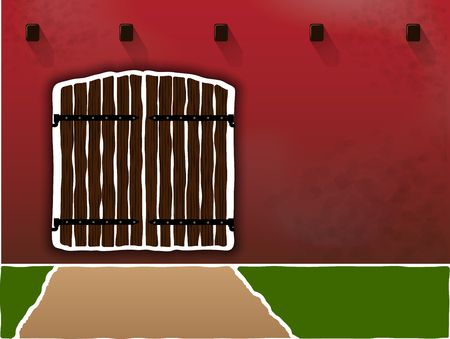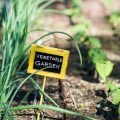Introduction to Allotment Gardening in the UK
If you stroll through many British towns and cities, it’s hard to miss the clusters of neatly kept plots, bursting with vegetables, flowers, and a fair bit of character. Allotment gardening is more than just a pastime here; it’s a cherished tradition that dates back to the 19th century, when parcels of land were set aside for ordinary folk to grow their own food. Today, allotments are woven into the fabric of British life, offering a sense of community, self-sufficiency, and fresh air—plus a place to escape the hustle and bustle for a spell. What makes an allotment truly unique isn’t just its history or the patchwork of sheds and greenhouses; it’s the way each plot becomes an expression of its gardener’s personality and wisdom handed down through generations. Whether you’re nurturing runner beans from seed or chatting over a cuppa with your plot neighbour, allotment gardening is about much more than crops—it’s about belonging. As we weigh up ground planting versus raised beds, it’s worth remembering that every decision on your plot connects you to this longstanding culture and the practical realities of working the British soil.
Understanding Ground Planting
Ground planting, often referred to as in-ground gardening, is the time-honoured method favoured by generations of UK allotmenteers. This approach involves sowing seeds or transplanting seedlings directly into the native soil of your plot. For many, it evokes memories of helping grandparents on their allotment, digging over the earth with a trusty fork and watching new life spring from the ground. Let’s take a closer look at why ground planting remains popular, as well as some challenges unique to Britain’s climate and soil conditions.
Advantages of Ground Planting
One of the chief appeals of ground planting is its simplicity—no need for timber frames or imported compost. The natural soil structure encourages deep root growth, which can produce sturdier plants and potentially higher yields for crops like potatoes, parsnips, and brassicas. In addition, direct access to groundwater means less reliance on frequent watering during dry spells—a boon in regions where hosepipe bans are common during summer.
Benefits at a Glance
| Benefit | Description |
|---|---|
| Cost-effective | No need for raised bed materials; just your tools and seeds. |
| Deeper roots | Plants can reach further into the soil for nutrients and moisture. |
| Traditional approach | Favours classic British crops that thrive in local conditions. |
| Less watering required | Soil retains moisture better than shallow raised beds during dry periods. |
Challenges of Ground Planting in the UK Climate
The British weather is nothing if not unpredictable. Heavy rainfall can lead to waterlogged plots, especially in low-lying areas with clay soils common across much of England and Wales. Poor drainage may stunt plant growth or even cause rot. On the flip side, a few weeks of sun can bake the topsoil hard as concrete, making it tough to dig or sow new seeds.
Common Problems Faced:
- Poor Drainage: Water tends to sit on heavy soils, leading to soggy roots or fungal diseases.
- Soil Compaction: Frequent walking or use of machinery compacts soil, reducing aeration and root penetration.
- Pest Pressure: Slugs, snails, and other critters find easy access to ground-level crops.
- Weed Competition: Native weeds thrive alongside your vegetables and require regular hoeing or hand-weeding.
A wise old saying goes: “Look after your soil, and your soil will look after you.” With ground planting, much depends on ongoing care—improving structure with organic matter, rotating crops to prevent disease build-up, and keeping a watchful eye on changing weather patterns. For those who cherish tradition and relish a hands-on connection with their patch of earth, ground planting remains a rewarding route—but one that calls for patience and persistence in equal measure.

3. Exploring Raised Bed Gardening
Raised beds have become something of a modern classic on UK allotments, turning up in plots from Cornwall to the Scottish Highlands. Simply put, raised beds are garden boxes or frames—often made from wood, recycled plastic, or even brick—filled with soil and compost, sitting above ground level. Their growing popularity is no surprise when you see seasoned gardeners and newcomers alike singing their praises down at the allotment on a Saturday morning.
The main benefit most folks talk about is control: with a raised bed, you’re the boss of your soil quality. If your plot’s earth is heavy clay or riddled with stones (not uncommon across much of Britain), you can fill your beds with a blend that suits your crops perfectly. This makes growing carrots, parsnips, or even delicate salad leaves much easier. Raised beds also drain better than most open ground, so waterlogged roots after a rainy week in November are less of a worry.
Another advantage is accessibility. For older gardeners—or anyone who finds bending over difficult—a raised bed brings the soil up to a more comfortable height. It’s easier on the knees and back, making it possible to keep gardening well into your golden years. Plus, defined borders mean weeds are kept at bay more easily, and paths between beds stay neat and mud-free—very handy during those long British winters.
However, there are downsides too. Setting up raised beds can be costly, especially if you want them to last more than a couple of seasons; good-quality timber isn’t cheap these days. There’s also an initial effort involved in building the frames and filling them with decent soil. And while they’re great for many vegetables and flowers, raised beds can dry out quicker in hot spells—meaning you’ll need to keep a keen eye on watering during any rare British heatwaves.
In short, raised beds offer improved control, tidiness, and accessibility for UK allotment holders but do require investment of both time and money upfront. Whether they’re worth it often depends on your site conditions and how you like to work—something every gardener learns with experience.
4. Weather and Soil: The Great British Factors
If you’ve spent any time on a UK allotment, you’ll know our weather is as unpredictable as a cat in a rainstorm. One minute the sun’s out, the next you’re dodging hailstones in your wellies. When it comes to deciding between ground planting and raised beds, these very British weather quirks—and our famously varied soil—play a starring role.
Rainfall and Drainage
Let’s start with rain. In much of the UK, heavy downpours are par for the course, particularly during autumn and winter. Raised beds come into their own here: they offer improved drainage, meaning your precious crops won’t be left sitting in soggy soil. On clay-heavy plots (not uncommon from Kent to Cumbria), waterlogging can put paid to many a good crop if you’re planting directly in the ground.
Soil Types Across the UK
The UK boasts an impressive patchwork of soil types—from free-draining sandy soils in Norfolk to sticky clays around Manchester. Here’s how different soils fare with each method:
| Soil Type | Ground Planting | Raised Beds |
|---|---|---|
| Clay | Poor drainage; slow to warm up in spring | Excellent for improving drainage and warming earlier |
| Sandy | Drains quickly but dries out fast; needs frequent watering | Easier to enrich and retain moisture with added compost |
| Loam | Ideal for most crops; well-balanced nutrients and drainage | Still beneficial but less critical than on other soils |
| Chalky/Alkaline | Can be nutrient-poor; drains rapidly | Adds flexibility for acid-loving plants by altering soil mix |
Frost Pockets and Microclimates
The lie of the land matters too. Low-lying plots can act as frost pockets—an issue when ground planting, as cold air settles at root level. Raised beds lift roots above this danger zone, helping tender plants survive those sneaky late-spring frosts that catch out even seasoned plot holders.
The Bottom Line From Experience
In my years on various allotments from Cornwall to Yorkshire, I’ve found that raised beds are often more forgiving of our damp climate and unpredictable weather patterns. They let you tailor soil conditions, dodge waterlogging, and eke out a longer growing season—especially handy if you’re aiming for prize leeks or early spuds. But don’t count out ground planting completely; on well-drained loams or sheltered spots, it remains the tried-and-true choice of many an old hand.
5. Accessibility, Maintenance, and Cost
When deciding between ground planting and raised beds for your UK allotment, it’s important to weigh up how each option meets your needs in terms of accessibility, ongoing maintenance, and cost—especially as these factors can make or break the gardening experience for many, particularly those with limited time or mobility.
Accessibility for All Gardeners
For older gardeners or those with back and knee issues, raised beds offer a real boon. The elevated height means less bending and stooping, making sowing, weeding, and harvesting much more comfortable. You can even design beds wide enough to accommodate wheelchair access or seating at the edge—a thoughtful touch for family plots or community gardens. Ground planting, while traditional, can be hard on the joints over time; unless you’re sprightly or enjoy kneeling in the soil, this method may become challenging as the years pass.
Maintenance: A Question of Time and Effort
Raised beds often require less day-to-day maintenance once established. Their defined borders help keep weeds at bay and prevent soil compaction from foot traffic—meaning fewer hours spent on hands and knees. On the flip side, ground plots can be prone to weed invasion and may need more frequent digging and turning over. That said, if you’re someone who enjoys the rhythmic labour of tending a large plot, ground planting does have its charms—just be prepared for a bit more elbow grease!
Cost Considerations
Here’s where things get practical. Raised beds come with an upfront investment: timber (ideally rot-resistant), fixings, compost, and perhaps even topsoil if your allotment’s earth isn’t up to scratch. Over time, you might need to replace boards or refresh soil levels. Ground planting requires minimal initial outlay—just seeds, basic tools, and maybe some manure or compost. However, if your plot is riddled with couch grass or heavy clay, you might find yourself spending more on amendments or equipment down the line.
The Long Game: Durability and Upkeep
While ground planting is about as low-tech as it gets—relying on nature’s resilience—raised beds do call for a little ongoing attention. Timber frames will eventually weather and need replacement every few years depending on material quality. But many UK gardeners feel the benefits outweigh these drawbacks, especially given our often-wet climate where good drainage is a must.
A Matter of Personal Preference
Ultimately, choosing between ground planting and raised beds comes down to your own circumstances: your physical ability, budget, available time, and how you envision working your allotment year after year. As many seasoned British growers would say—there’s no shame in mixing both methods across your plot for the best of both worlds!
6. Case Studies from British Allotment Keepers
If you’ve ever wandered through the patchwork of UK allotments, you’ll know every grower has a story and a preferred method. Let’s take a peek at what seasoned plot holders from various corners of Britain have to say about ground planting versus raised beds – there’s wisdom to be gleaned from their years in wellies and mud.
Yorkshire: Sticking to Tradition
In the heart of Yorkshire, Margaret, a stalwart of her local allotment association for over thirty years, swears by traditional ground planting. “Our soil drains well after all these years,” she explains, “and it means I can rotate my spuds and brassicas easily.” She notes that while raised beds are popular with newcomers, many old hands like herself prefer the flexibility and space of in-ground plots, especially for crops like potatoes and runner beans.
London: Maximising Space with Raised Beds
Down south in bustling London, space is at a premium. Tom, an allotment holder in Hackney, shares, “I built raised beds because our soil was so compacted and heavy with clay. The beds warm up quickly come spring and make it easier to keep on top of weeds.” He also finds raised beds particularly handy for growing salad leaves and herbs, which he harvests regularly for his kitchen.
Cornwall: Adapting to the Elements
In blustery Cornwall, where salty winds can batter even the hardiest plants, Julia combines both methods. “Raised beds help me manage drainage on sloping ground,” she says, “but I still plant squash and courgettes directly in the earth where there’s more room to sprawl.” She suggests that flexibility is key – adapting your approach depending on the unique conditions of your plot.
Shared Wisdom Across Regions
What emerges from these tales is not a one-size-fits-all answer but a testament to British ingenuity and pragmatism. Raised beds are often favoured by those dealing with poor soils or mobility challenges; ground planting remains popular for its simplicity and tradition. Many growers adopt a mix-and-match approach, using raised beds for delicate crops or tricky soils while keeping part of their plot open for root veg or larger plants.
Final Thoughts from Seasoned Growers
No matter where you garden in the UK – city or countryside, clay or sandy loam – the best method often comes down to your plot’s quirks and your own needs. Listening to those who’ve tended their patches through wet summers and dry spells offers invaluable guidance: observe your land closely, don’t be afraid to experiment, and remember that every successful allotment has its roots in experience shared over a cuppa beside the shed.
7. Conclusion: Making the Right Choice for Your Plot
As we reach the end of our exploration into ground planting and raised beds for UK allotment gardens, it’s clear there’s no one-size-fits-all answer. Each approach comes with its own set of benefits and considerations, shaped by your soil type, local climate, budget, and physical ability. Ground planting appeals to traditionalists and is often less expensive, making use of the land’s natural fertility and structure. Raised beds, on the other hand, offer better drainage, improved soil control, and easier access—especially helpful if bending down is a challenge or your plot suffers from persistent weeds or poor soil.
Seasoned UK gardeners will tell you that success at the allotment isn’t just about choosing one method over the other—it’s about observing your plot, understanding its quirks, and adapting as you go along. Many experienced hands recommend starting small: try a few raised beds alongside traditional ground rows to see what works best for your crops and lifestyle. Don’t be afraid to mix approaches; after all, flexibility is often the key to a thriving garden.
Remember the old saying: “The best fertiliser is the gardener’s shadow.” Spend time on your plot, talk to fellow plotholders, and don’t rush big changes before watching how things unfold through a full growing season. Whether you dig in or build up, consistent care and a willingness to learn from both triumphs and setbacks will serve you well. Ultimately, choosing between ground planting and raised beds comes down to what suits your needs—and your patch of British earth—best.


